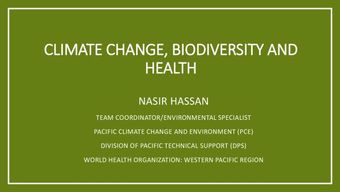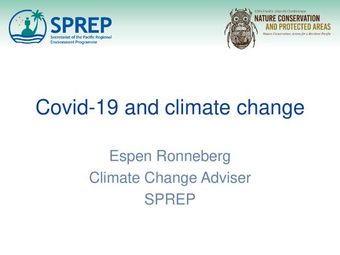Regional Environmental Change - Climate hotspots: key vulnerable regions, climate change and limits to warming
- Description:
- Regional environmental change - Supplement 1 - Articles included:|Climate hotspots: key vulnerable regions, climate change and limits to warming (Editorial)|Three views of two degrees (Jaeger CC., Jaeger J.)|Climate and conflicts: the security risks of global warming (Scheffran J., Battaglini A.)|Dangerous levels of climate change for agricultural production in China (Tao F., Zhang, Z., Yokozawa M.)|Impacts of climate change on Chinese ecosystems: key vulnerable regions and potential thresholds (Ni J.)|Climate change in Nepal and its impact on Himalayan glaciers (Shrestha AB., Aryal R.)|Implications of climate change in sustained agricultural productivity in South Asia (Lal M.)|Climate change, flooding in South Asia and implications (Mirza MMQ.)|Climate change risks in Sahelian Africa (Ben Mohamed A.)|Agriculture, livelihoods and climate change in the West African Sahel (Sissoko K., van Keulen H., Verhagen J., Tekken V., Battaglini A.)|Potential responses of terrestrial biodiversity in Southern Africa to anthropogenic climate change (Midgley GF., Thuiller W.)|Climate change and agricultural vulnerability: a case study of rain-fed wheat in Kairouan, Central Tunisia (Mougou R., Mansour M., Iglesias A., Chebbi RZ., Battaglini A.)|Towards a general relationship between climate change and biodiversity: an example for plant species in Europe (Alkemade R., Bakkenes M., Eickhout B.)|The responses of agriculture in Europe and climate change (Bindi M., Olesen JE.)|Toward adaptation of agriculture to climate change in the Mediterranean (Iglesias A., Mougou R. Moneo M., Quiroga S.)|Climate change, food stress, and security in Russia (Dronin N., Kirilenko A.)|Climate change threats to environment in the tropical Andes: glaciers and water resources (Chevallier P., Pouyaud B., Suarez W., Condom T.)|Climate change and Australia: key vulnerable regions (Hughes L.)|Dangerous climate change and water resources in Australia (Risbey JS.)|Australian agriculture: coping with dangerous climate change (Steffen W., Sims J., Walcott J., Laughlin G.)|Coral reef ecosystems and anthropogenic climate change (Hoegh-Guldberg O.)|Dangerous climate change in the Pacific islands: food production and food security (Barnett J.)|Critical vulnerabilities of marine and sea ice-based ecosystems in the high Arctic (Johannessen OM., Miles MW.)|Climate vulnerability of ecosystems and landscapes on Alaska's North Slope (Kittel TGF., Baker BB., Higgins JV., Haney JC.)|Interpreting 'dangerous' in the United Nations framework convention on climate change and the human rights of Inuit (Crowley, P.)
- Display date:
- 2011
- Collections:
- Secretariat of the Pacific Regional Environment Programme (SPREP)
- Publisher:
- Springer-Verlag Berlin Heidelber
- Content partner:
- Secretariat of the Pacific Regional Environment Programme (SPREP)
- Availability:
- Not specified
-
Copyright status: All rights reservedFind out more about what you are able to do with this itemThis item is all rights reserved, with means you'll have to get permission from Secretariat of the Pacific Regional Environment Programme (SPREP) before using it. For more information, please see our use and reuse page.What can I do with this item?Non-infringing useNZ copyright law does not prevent every use of a copyright work, and this item may be hosted by an international institute or organisation. You should consider what you can and cannot do with a copyright work.No sharingYou may not copy and/or share this item with others without further permission. This includes posting it on your blog, using it in a presentation, or any other public use.No modifyingYou are not allowed to adapt or remix this item into any other works.No commercial useYou may not use this item commercially.
Related items
Welcome and warm Pasifik greetings
The information on this site has been gathered from our content partners.
The names, terms, and labels that we present on the site may contain images or voices of deceased persons and may also reflect the bias, norms, and perspective of the period of time in which they were created. We accept that these may not be appropriate today.
If you have any concerns or questions about an item, please contact us.

